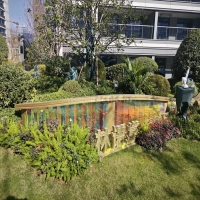Welcome to the website for landscape facilities products and knowledge.
How do manufacturers test the breathability of landscape sofa fabrics to ensure comfort in hot weather?
Manufacturers employ rigorous testing methods to evaluate the breathability of landscape sofa fabrics, ensuring optimal comfort in hot weather. One common technique is the moisture vapor transmission rate (MVTR) test, which measures how quickly moisture passes through the fabric. High breathability fabrics allow sweat to evaporate efficiently, keeping users cool.
Another method involves airflow resistance testing, where specialized equipment assesses how easily air circulates through the material. Fabrics with low resistance promote better ventilation, enhancing comfort during warm conditions. Additionally, thermal imaging is used to analyze heat dissipation, identifying fabrics that minimize heat retention.
Standards like ISO 11092 provide guidelines for evaluating fabric breathability, ensuring consistency across the industry. Manufacturers also conduct real-world simulations, exposing fabrics to sunlight and humidity to mimic outdoor conditions. By combining these tests, they guarantee that landscape sofa fabrics deliver both durability and comfort, even in scorching temperatures.
Innovative materials, such as mesh or perforated textiles, are often prioritized for their superior breathability. These fabrics undergo additional stress tests to ensure they maintain performance over time. Ultimately, thorough testing ensures that outdoor sofas remain comfortable and functional, no matter how high the mercury rises.
Related search:

Recommendation
Metal and acrylic color-changing combined curtain wall for large-scale public landscape facilities